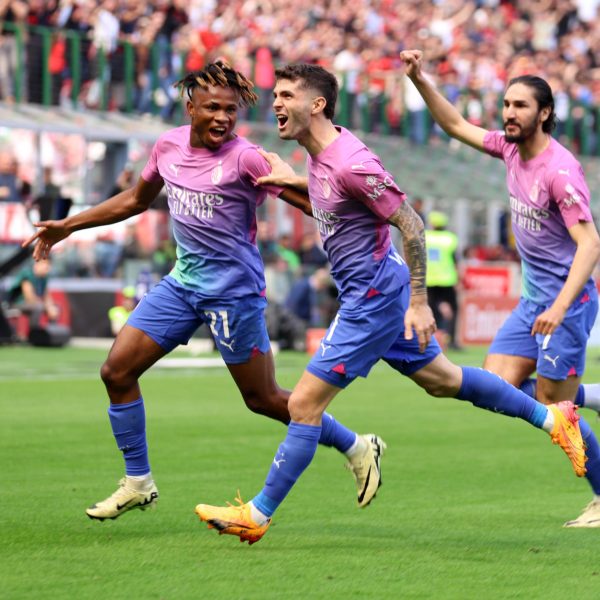Four takeaways from USMNT 3 – Trinidad and Tobago 0
By Charles Boehm – WASHINGTON, DC (Nov 17, 2023) US Soccer Players – It took 82 long minutes for the first one to arrive. But the USMNT eventually got the goals they needed to break down a stubborn Trinidad and Tobago at Q2 Stadium on Thursday night and set themselves up well for the second-leg of their Concacaf Nations League quarterfinal series in Port of Spain on Monday. Here are some themes and observations as the scene shifts from Texas to the Caribbean.
The floodgates principle
Speaking to TNT during a halftime interview, Gregg Berhalter expressed confidence that once the first goal was scored, more would follow. He said those words fresh off a scoreless, and for the United States mostly frustrating, first-half, and the patterns of those first 45 minutes continued for more than half an hour after the break.
Berhalter was vindicated in the end. Ricardo Pepi produced the latest in a string of impact substitute performances, breaking the deadlock eight minutes from full time with a deceptively difficult near-post finish, and as is often the case, 10-man Trinidad and Tobago’s resolve was broken in similar fashion. Antonee “Jedi” Robinson doubled the advantage four minutes later with a deflected strike from range before Gio Reyna combined beautifully with Folarin Balogun to provide extra breathing room.
The fact that it took so long to break through is suboptimal and is no doubt being analyzed in depth by players and staff. Still, the persistence and focus shown to stick to the task bodes well. Playing right up until the final whistle sidestepped the uncomfortable prospect of taking only a narrow advantage into the away leg.
“I felt like we didn’t panic at any point,” Robinson told reporters afterwards. “We just knew that we had to keep going and I feel like this team’s really good at that. We try and do the right things until the very end, knowing that it’s going to pay off at some point.”
Tactical tweaks?
The TNT Sports broadcast team made clear that they considered the USMNT to be deployed in a new 4-2-2-2 formation, with Balogun and Kevin Paredes paired up front ahead of a box midfield structure. Contemporary versions of this shape are mainly associated with aggressively high-pressing teams like the New York Red Bulls and some of their siblings within that global network of clubs.
The general conventional wisdom around the 4-2-2-2 is that it aids in counterpressing and transition play, helping cluster numbers around the ball and clogging central areas while allowing fullbacks to advance into the attack. In that light it was interesting to see it tried out against a Soca Warriors team clearly focused on limiting chances via a deep, packed defensive shape and thus rarely inclined to try to play out of the back or push numbers forward.
It should be noted that the usual data and statistics providers did not quite agree with the broadcasters, instead laying out the USMNT XI in a 4-2-3-1 shape it’s more commonly used this year. And that’s mostly how it looked in the run of play, with Paredes working the left attacking channels in place of the injured Christian Pulisic and Malik Tillman doing the same on the right in relief of Tim Weah.
Whether Berhalter was trying out something new or not, the difficulties in generating clear scoring chances in the first half despite dominance of possession and an early red card for the opponents will likely factor into his evaluations and reflections. Notably, Pepi’s game-changing contributions were made alongside Balogun rather than in place of him, which may hint at a growing openness to playing with two out-and-out strikers.
In the trenches
Observers could have a lively debate about whether going down to 10 men so early actually made Trinidad and Tobago even more difficult to break down for the USMNT. That’s inherently subjective. What’s less so is the hard grind that went into earning that numerical advantage for the home team.
Weston McKennie contributed another excellent box-to-box display in central midfield for the Yanks, as his stats line conveys: 102 touches, 81/93 passes completed (87%), five chances created, 6/11 long balls completed, 2/3 dribbles successfully completed, 10 ball recoveries, 5/8 duels won. Then there’s the easily overlooked number of three fouls drawn.
Two of those were the yellow cards that saw Trinidad and Tobago midfielder Noah Powder exiting with a red in the 37th minute. That’s the kind of unglamorous work that can make a big difference.
McKennie’s central partner Yunus Musah posted a similarly dominant data set, with cleanliness on the ball and diligence off it. They, along with the sturdy center-back pairing of Tim Ream and Cameron Carter-Vickers, were quietly essential to setting the tone of the match and ensuring that the visitors effectively had no choice but to bunker.
Trinidad return
Monday’s second leg at Hasely Crawford Stadium in Port of Spain marks the USMNT’s first match on the island since October 10, 2017, when the program’s 2018 World Cup qualifying campaign ended in disappointment. Six years on, the national team has changed drastically from that juncture. New generations have risen to join the player pool and the overall trajectory is clearly on an upward slope. While the events of six years ago may be a talking point in the media in the runup to Monday’s match, seeing out a decisive margin of victory in the first leg simplifies the task for the current group. Had the USMNT been held to a 0-0 or only a narrow victory in leg one, things might feel a bit different.
“Just like we can embrace the good stuff, we also have to embrace the bad stuff, and it was a great learning moment for us collectively,” Berhalter said of that 2017 qualifier on Wednesday. “In my opinion, it’s not about ignoring that, it’s about embracing it and leaning into it. We talk about preparation in this camp. Some of it stems from lessons learned in that camp as well.”
At this point, the Yanks have stacked up a sequence of emphatic wins over Trinidad and Tobago and charted a path to renewal, redemption, and beyond. That provides the opportunity to make this international window a positive signpost, and to celebrate an even bigger moment in the annals of this matchup. Paul Caligiuri’s “shot heard ‘round the world,” the game-winning goal in a 1989 triumph at that same venue in Port of Spain which booked the USMNT’s qualification for the 1990 World Cup, happened 34 years ago on Sunday, a feat which changed the history of soccer in the United States.
“We’re just a little dot on this timeline, that a lot has come before us, a lot is going to come after us,” Berhalter said as he described showing that pivotal moment to his squad. “We wouldn’t have been here in this same state if it wasn’t for us qualifying for that World Cup, if it wasn’t for his goal…. So I thought, no better way on the anniversary of the goal and playing Trinidad, to honor one of our ex-teammates and really pay tribute to his contribution to US Soccer.”
Charles Boehm is a Washington, DC-based writer and the editor of The Soccer Wire. Contact him at:cboehm@thesoccerwire.com. Follow him on Twitter @cboehm.






